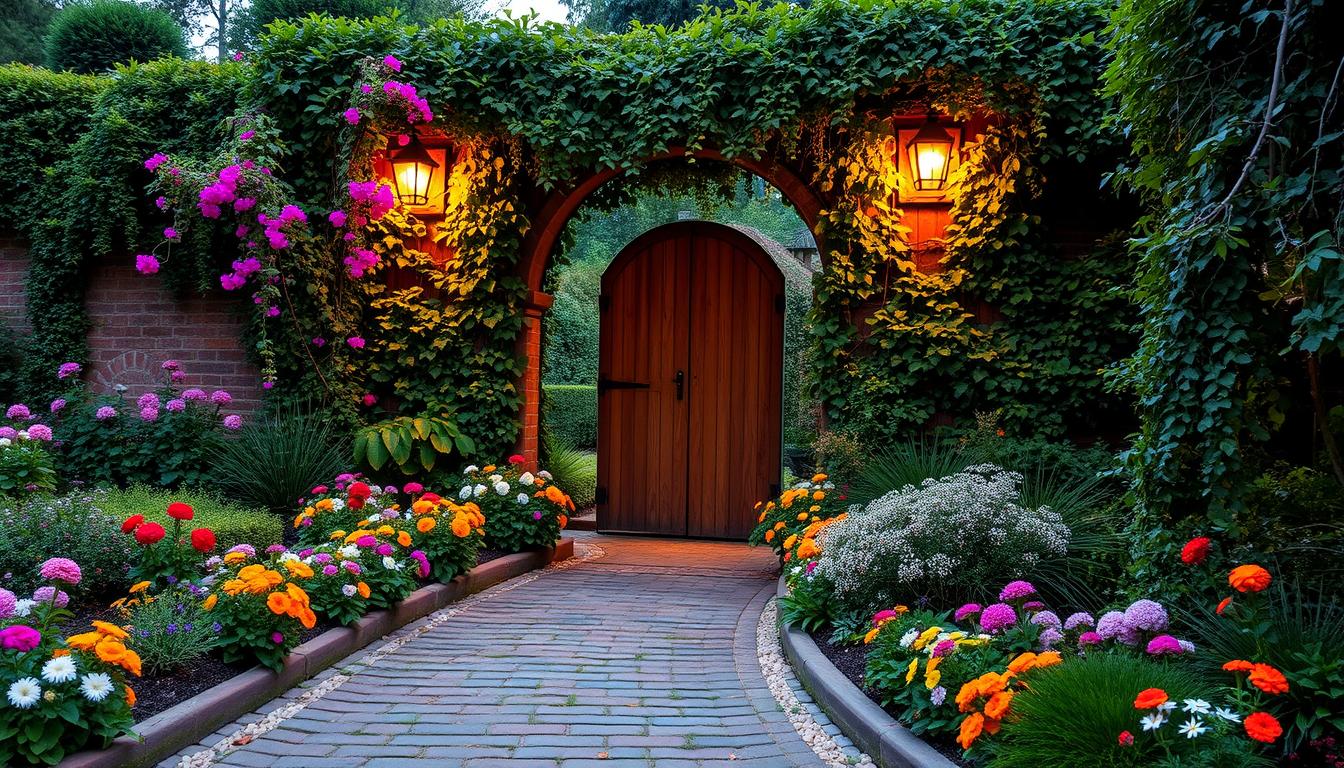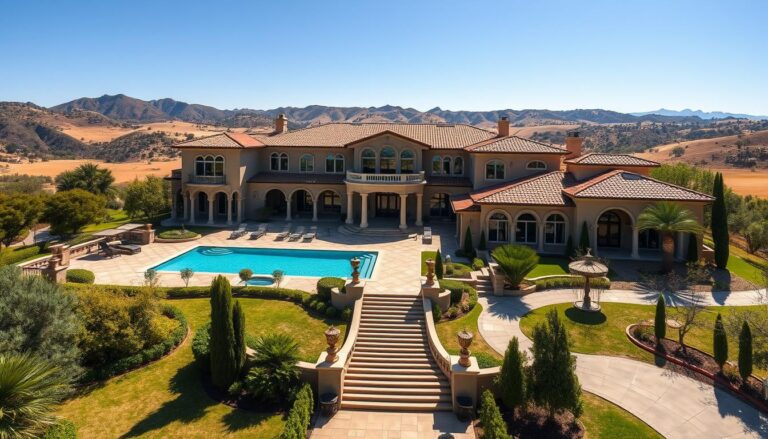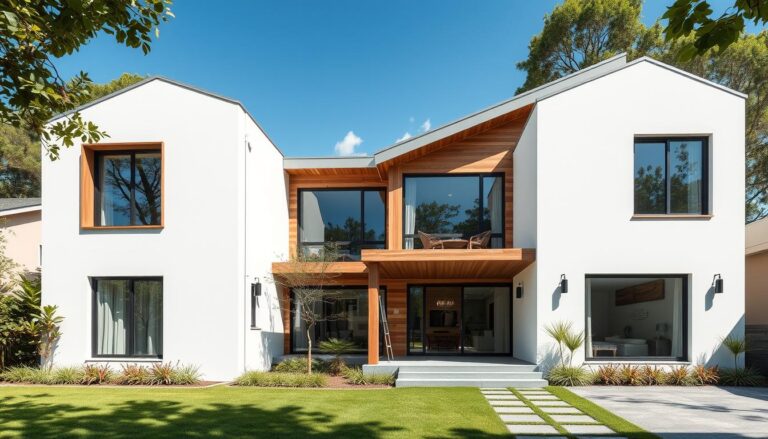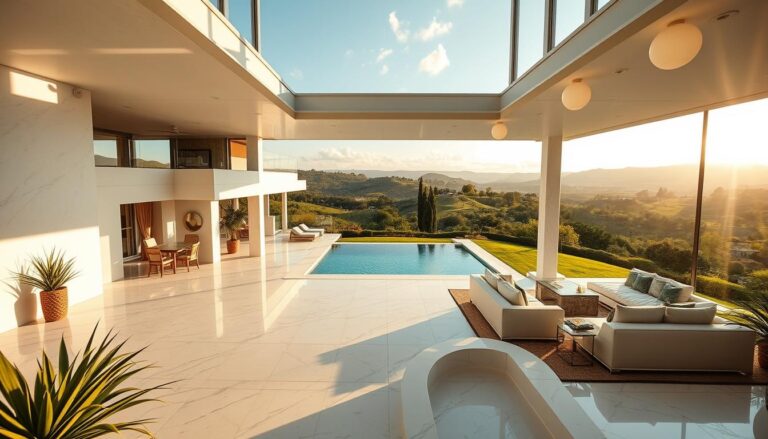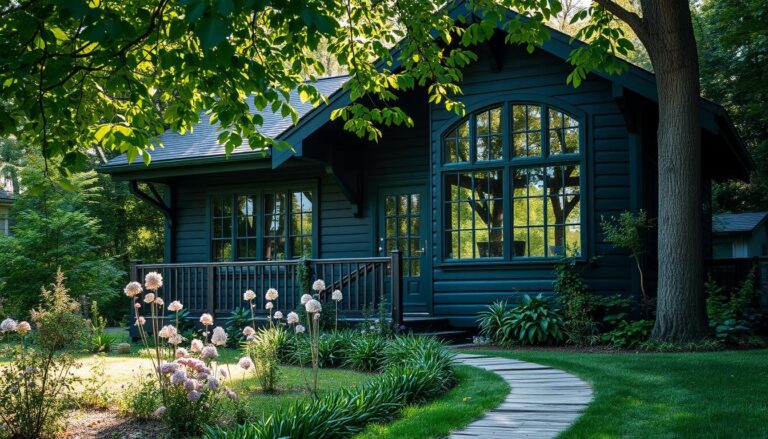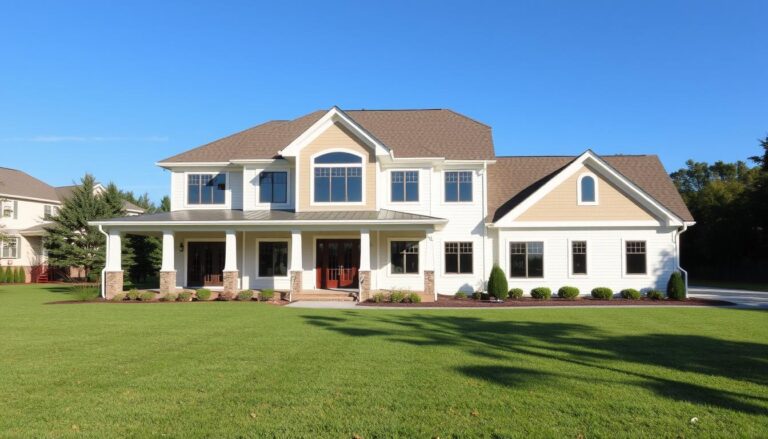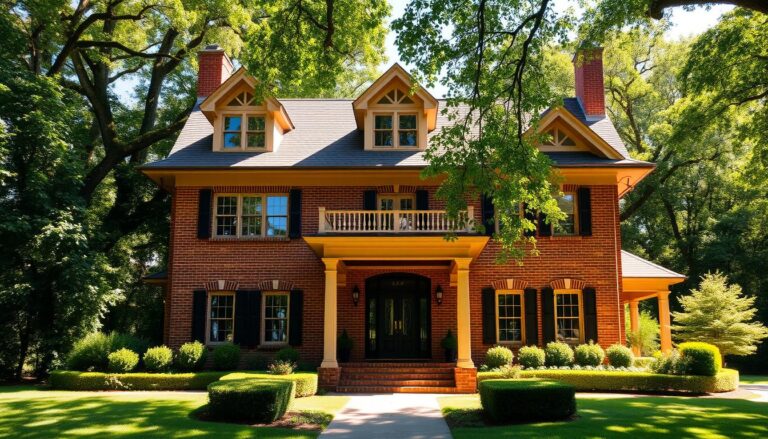Garden Entrances in a Building Ideas: Creating Inviting Pathways
Imagine if your building’s entrance could tell a story before you even enter. Garden entrances are changing how we design buildings. They turn simple doorways into stunning landscaped entryways that draw people in.
Today’s buildings are more than just places to live or work. They’re embracing nature with innovative garden entrance ideas. These designs mix beauty, sustainability, and human experience. They show how architecture can connect with nature.
Your building’s entrance is its first chance to make an impression. By adding thoughtful garden design, you can make an ordinary entrance into something special. It turns simple spaces into unforgettable experiences.
Key Takeaways
- Garden entrances elevate architectural design
- Landscaped entryways create memorable first impressions
- Nature-integrated designs enhance building aesthetics
- Sustainable entrance concepts add property value
- Strategic garden design improves visitor experience
Understanding the Impact of Biophilic Design in Building Entrances
Biophilic design is changing how architects design building entrances. Green architecture is now a key part of creating spaces that connect us with nature. Walking into a building can now be a stunning experience that awakens all your senses.
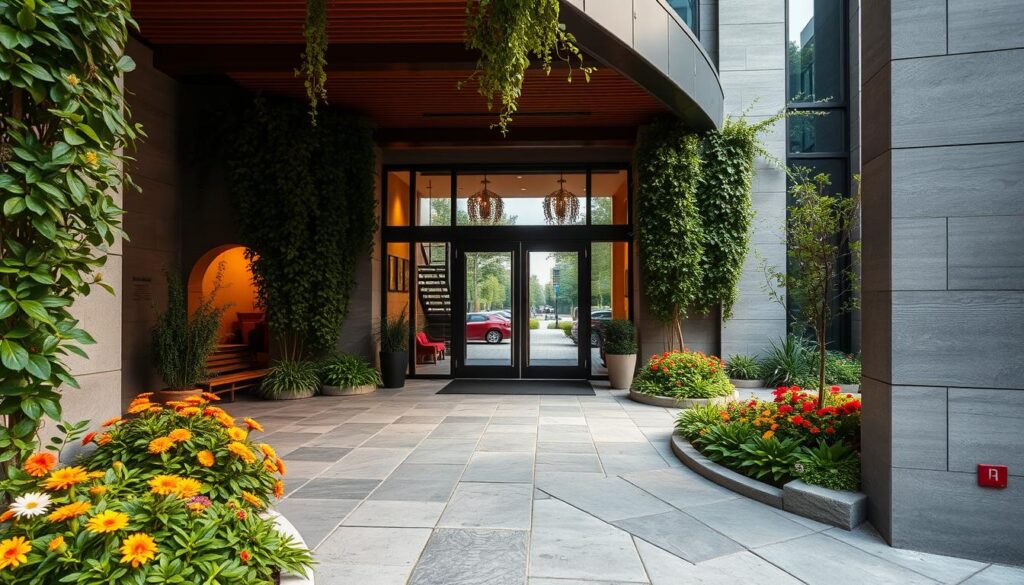
Modern design knows that our surroundings greatly affect our mental and physical health. Adding natural elements to buildings is more than just making them look good.
Benefits of Nature-Integrated Architecture
- Reduces stress levels
- Improves air quality
- Enhances cognitive function
- Boosts overall workplace productivity
Psychology of Green Spaces in Welcome Areas
Green spaces in building entrances have a quick and positive effect on our minds. Elements like living walls, indoor plants, and organic materials make us feel calm and connected. Our brains release chemicals that help us relax and feel better when we’re in these spaces.
Connection to Well-being and Productivity
Studies show that biophilic design can make us up to 15% more productive. Green architecture is not just about looks—it’s about making spaces that support our health and performance. By adding nature to buildings, they become more than just structures. They become caring spaces that help us reach our full potential.
Essential Elements of Garden Entrances in a Building Ideas
Creating garden entrances needs careful planning. They should connect indoor and outdoor spaces smoothly. Your entrance design is more than looks; it’s a key link between inside and outside.
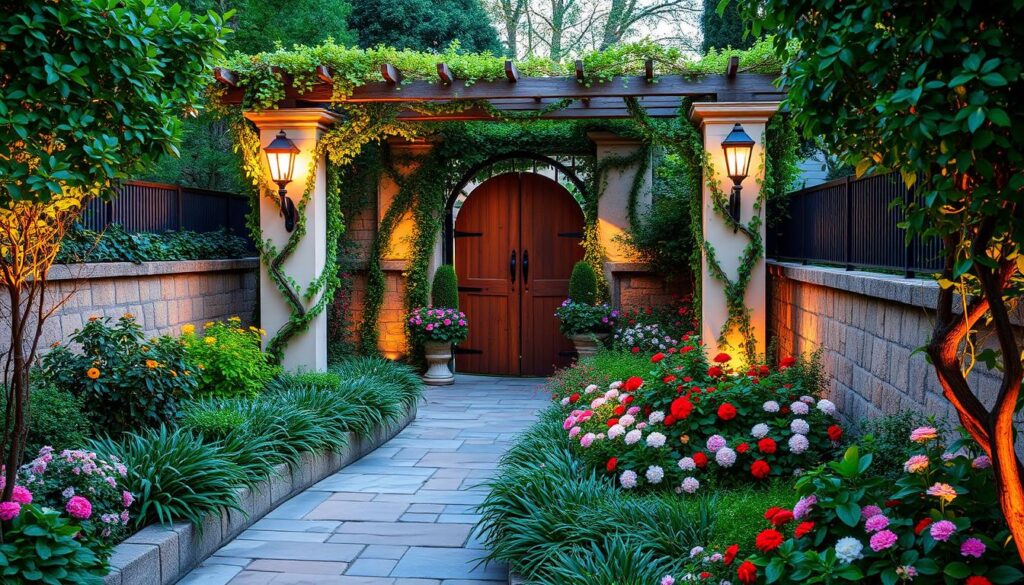
For great garden entrances, focus on plants and hardscaping. Make a path that invites visitors and shows off nature’s beauty.
- Select native plants that thrive in local climate conditions
- Design clear traffic flow patterns
- Incorporate accessible design principles
- Balance architectural structure with natural elements
Think about upkeep to keep your entrance lively all year. Choose sustainable materials and plants that need little care. This saves time and keeps it looking good.
| Design Element | Key Considerations | Benefits |
|---|---|---|
| Plant Selection | Climate adaptability | Low maintenance, visual interest |
| Hardscaping | Durable materials | Structural integrity, aesthetic appeal |
| Lighting | Strategic placement | Safety, ambiance, extended usability |
By using these key elements, you can make garden entrances into welcoming spaces. They connect built environments with nature seamlessly.
Incorporating Living Walls and Vertical Gardens
Green design has changed building entrances with new ideas like living walls and vertical gardens. These green solutions make ordinary spaces lively and sustainable. They also improve air quality and grab attention.
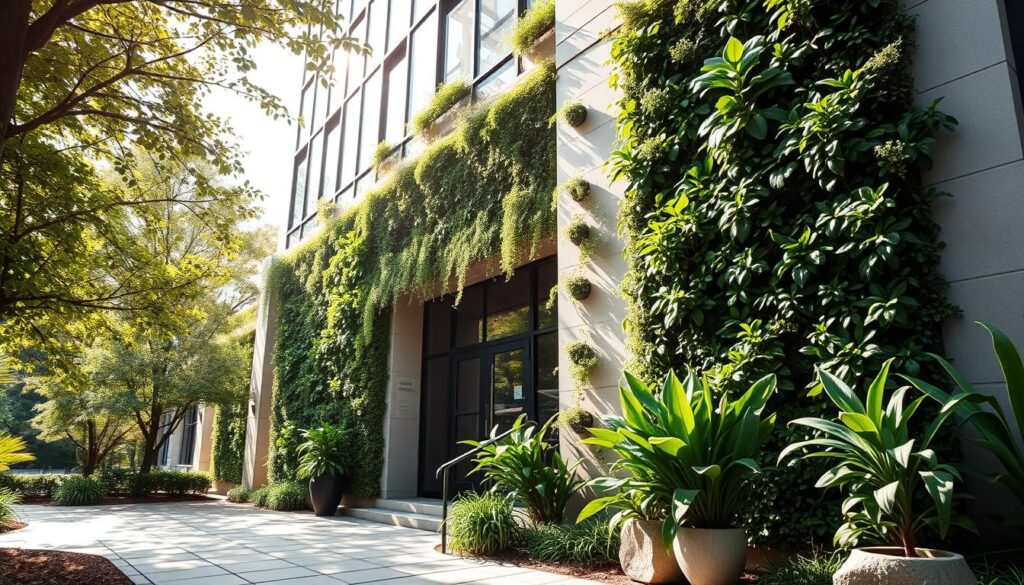
Living walls bring flexibility to architectural designs. They turn blank walls into green, living surfaces. Vertical gardens are more than just decorations. They are functional ecosystems that boost building looks and performance.
Plant Selection for Vertical Gardens
Picking the right plants is key for vertical gardens. Think about these important points:
- Light tolerance and needs
- Water retention skills
- Root system adaptability
- Growth rate and density
Maintenance Requirements and Systems
Vertical gardens need special care systems. Automated watering and nutrient systems keep plants healthy. Professional setup ensures these green walls stay lush and vibrant.
Integration with Building Architecture
Vertical gardens work well with building designs. Architects and designers can work together. They create living walls that match the building’s look while adding environmental benefits.
Today’s vertical gardens use new hydroponic and aeroponic tech. These systems support plant growth with little soil and water. This makes living walls fit for many architectural styles and spaces.
Sustainable Materials for Garden Entrance Design
Creating a stunning garden entrance starts with choosing sustainable materials. These materials should blend well with nature. Your choice greatly affects both the look and the environment.
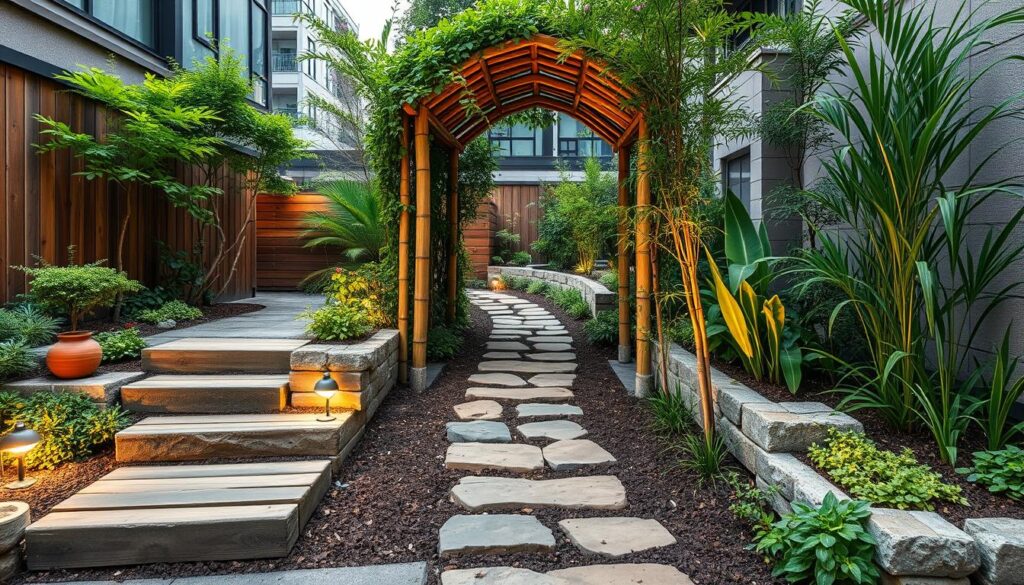
Using natural materials makes garden entrances eco-friendly. Architects and designers focus on materials that are good for the planet. They aim to create beautiful, useful entryways.
- Reclaimed wood for walkways and border elements
- Locally-sourced stone for paving and decorative features
- Recycled concrete alternatives
- Permeable paving systems
- Bamboo and other rapidly renewable resources
When picking sustainable materials, keep these points in mind:
| Material | Environmental Impact | Durability |
|---|---|---|
| Reclaimed Timber | Low carbon footprint | High with proper treatment |
| Recycled Concrete | Reduces waste | Comparable to traditional concrete |
| Local Stone | Minimal transportation emissions | Excellent long-term performance |
Your garden entrance can be a symbol of sustainable design. Choose materials that are good for the planet. This way, you create a welcoming and stunning space.
Lighting Solutions for Garden Entrances
Illuminating garden entrances turns them into magical gateways. They welcome visitors and show off sustainable design. Your eco-friendly entrances can be stunning with the right lighting.
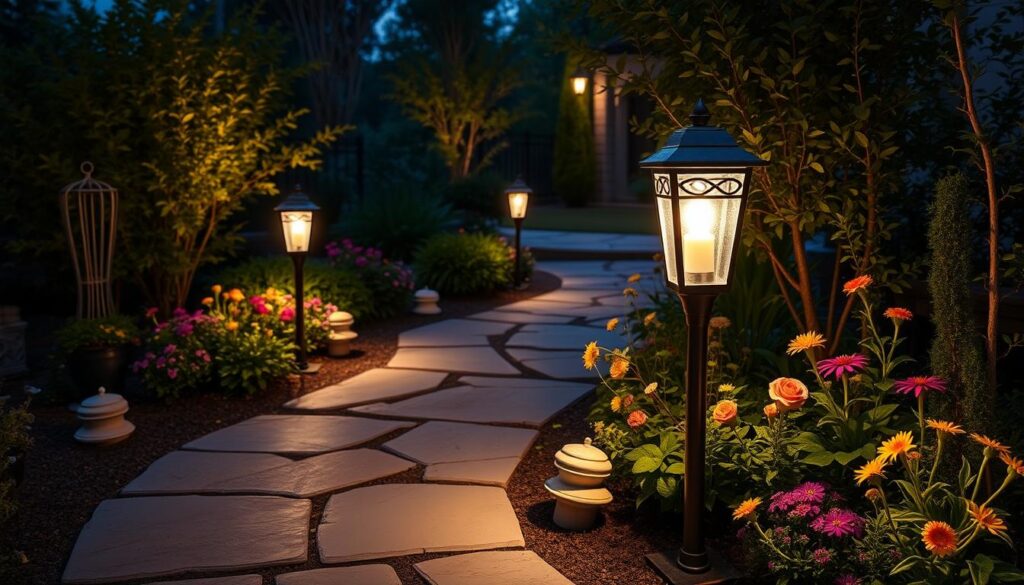
Good lighting does more than just light up a space. It sets the mood, highlights buildings, and makes outdoor areas safer.
Natural Light Optimization
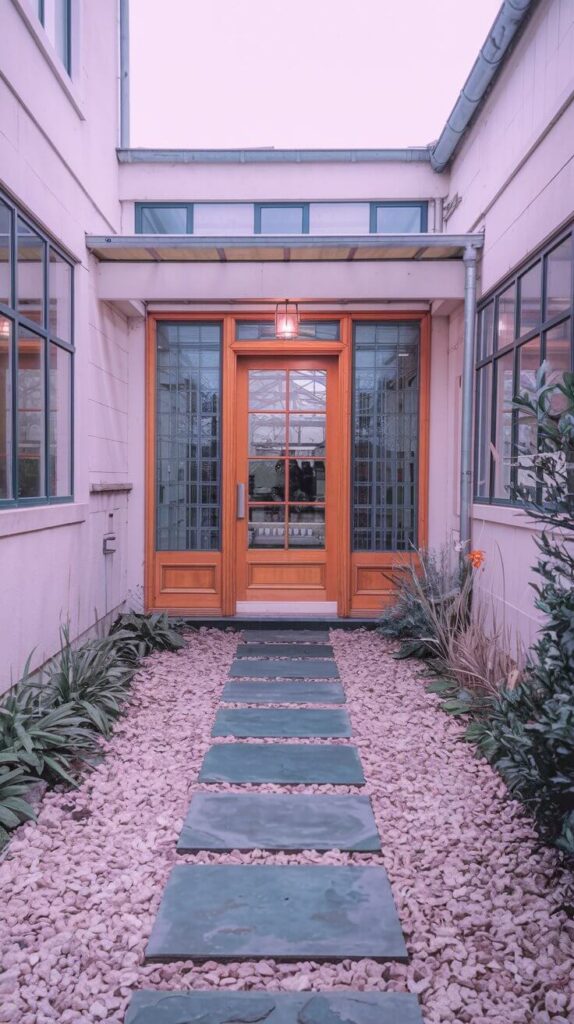
Make the most of natural light with smart design:
-
Install reflective surfaces to amplify daylight
-
Use translucent materials like glass panels
-
Create light wells that channel sunlight
-
Position entrance areas to capture morning and evening light
Energy-Efficient Artificial Lighting
Choose lights that save energy:
-
LED pathway lights with solar charging
-
Motion-sensor landscape illumination
-
Low-voltage lighting systems
-
Smart controls for precise energy management
Water Features and Their Role in Entrance Design
Water features turn landscaped entryways into stunning spaces. They engage your senses and make the atmosphere welcoming. Adding water elements to eco-friendly entrances boosts the visual appeal and emotional welcome.
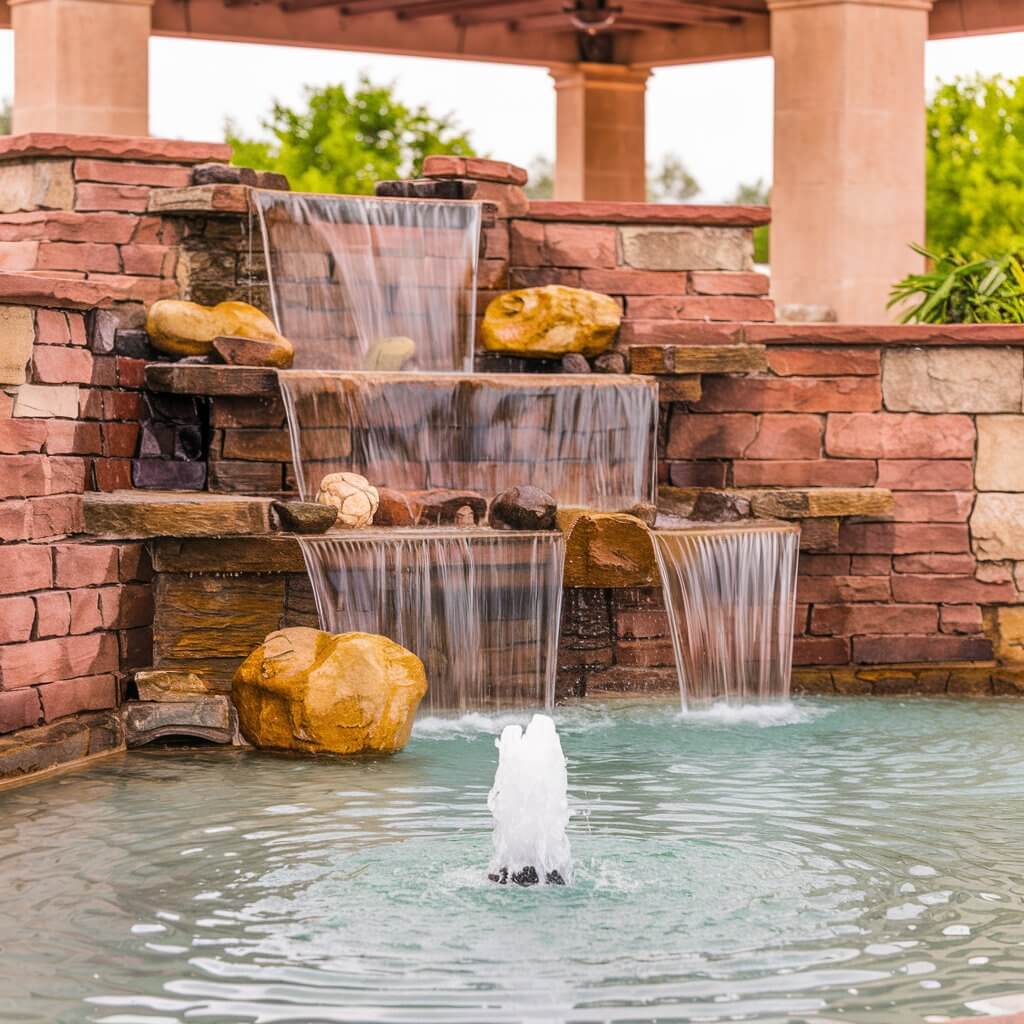
When designing water features for your entrance, keep these key principles in mind:
- Scale appropriate to the entrance size
- Water conservation techniques
- Low-maintenance aquatic ecosystem
- Harmonization with architectural style
Small fountains, cascading walls, and reflective pools bring many benefits. They mask urban noise, add visual interest, and cool the air around your entrance.
Maintenance Schedule Planning
Keeping your garden entrance looking good all year needs a solid maintenance plan. Here’s a suggested schedule:
| Season | Maintenance Tasks | Frequency |
|---|---|---|
| Spring | Pruning, mulching, planting | Monthly |
| Summer | Regular watering, pest control | Bi-weekly |
| Fall | Leaf removal, soil preparation | Monthly |
| Winter | Plant protection, minimal pruning | Quarterly |
By following these tips, you’ll have a garden entrance that’s both beautiful and durable. It will show off the beauty of green architecture all year.
Space-Saving Solutions for Small Entrance Areas
Turning small entrance areas into green spaces is all about creativity and smart design. Vertical gardens are a great way to make the most of tiny areas. They create beautiful connections between indoors and outdoors. With the right design, even the smallest entrance can become a stunning green oasis.
- Modular vertical garden systems that attach directly to walls
- Slim hanging planters with trailing plants
- Multi-functional furniture with built-in plant compartments
- Reflective surfaces to create visual depth and expansion
Choosing the right plants is key for vertical gardens in small entrances. Look for plants that don’t need much space and are easy to care for. Succulents, air plants, and small ferns are perfect for tiny areas. They add a touch of greenery without taking up too much room.
| Plant Type | Space Requirements | Maintenance Level |
|---|---|---|
| Succulents | Minimal | Low |
| Air Plants | Minimal | Very Low |
| Compact Ferns | Small | Moderate |
Lighting is also important for vertical gardens. Use LED grow lights or soft ambient lighting to highlight your plants. Wall-mounted lights save space and make the area feel welcoming. They help merge the indoors with the outdoors beautifully.
Smart Technology Integration in Garden Entrances
Technology is changing garden entrances, making them smart and eco-friendly. Modern tech makes these areas more efficient and comfortable. It also responds to the environment.
New technologies are changing garden entrance design. They offer control and optimization for eco-friendly entrances.
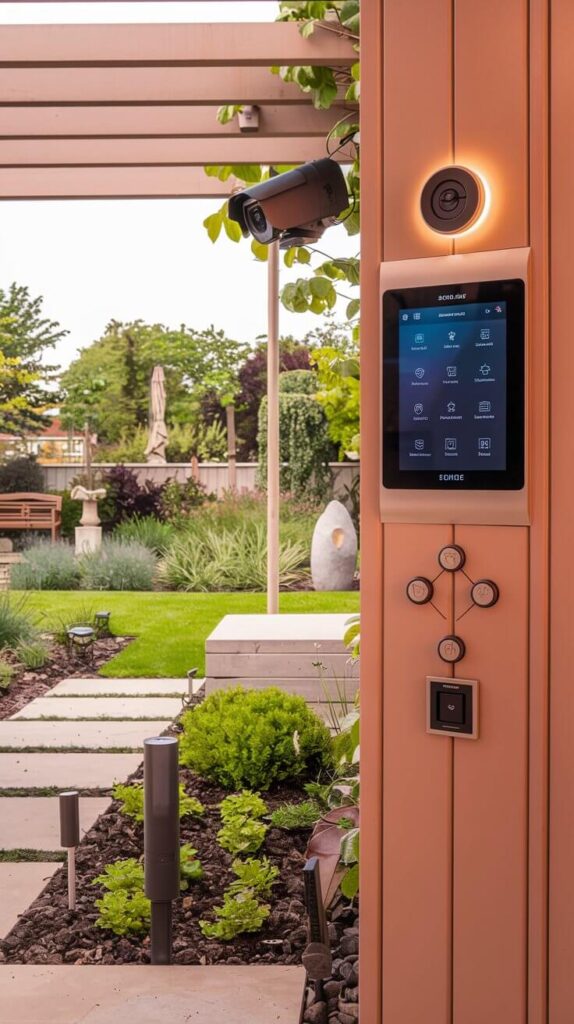
Automated Irrigation Systems
Smart irrigation systems are precise in caring for plants. They can:
- Check soil moisture levels in real-time
- Adjust water based on weather
- Save water with targeted hydration
- Work with apps for remote control
Climate Control Solutions
Smart climate management changes garden entrance environments. It offers:
- Automated shading
- Temperature-responsive ventilation
- Microclimate control for plant health
Monitoring and Maintenance Technology
Advanced sensors manage garden entrances. They track:
- Air quality
- Plant health
- Environmental stress
- Predictive maintenance alerts

